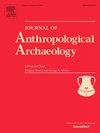Beyond the “Luxury Food” Paradigm: Reassessing the social significance of rice in Late Neolithic (4500–4000 cal BP) Southeastern Shandong, China
IF 2.2
1区 社会学
Q1 ANTHROPOLOGY
引用次数: 0
Abstract
The role of food in hierarchical societies has been widely discussed, particularly for rice (Oryza sativa L.), a crop of great economic importance and symbolic significance in Asia. Previous studies have emphasized the role of rice as a luxury food and a status symbol in the middle and lower Yellow River during the Late Neolithic to Bronze Age, primarily based on its concentrated presence in large settlements in various areas. However, the “luxury food” hypothesis remains contested due to insufficient comparative analysis of rice utilization patterns across settlements of different sizes. This study examines the nature of rice farming practices and the social significance of rice during the Late Neolithic period through new archaeobotanical evidence from Sujiacun (4,500–4,000 cal BP) alongside material from contemporaneous sites in southeastern Shandong, China. The results suggest that rice processing and consumption at Sujiacun were organized at the household level, with cooperation among households for some activities. We argue that rice served as a staple food across settlements of different sizes in southeastern Shandong, a pattern that transcends the explanatory scope of the traditional “luxury food” paradigm. This widespread adoption was driven by improvements in rice cultivation techniques, supported by community cooperation and inter–household collaboration. The study reveals that the social significance of rice is dynamic in both time and space, influenced by the developmental trajectories of rice cultivation in different social and environmental contexts. This further underscores the importance of evaluating specific archaeological contexts in investigations about access to rice or to other hypothesized luxury foods.
超越“奢侈食品”范式:重新评估新石器时代晚期(4500-4000 cal BP)山东东南部水稻的社会意义
食物在等级社会中的作用已经被广泛讨论,特别是水稻(Oryza sativa L.),一种在亚洲具有重要经济意义和象征意义的作物。先前的研究强调了新石器时代晚期至青铜时代黄河中下游地区大米作为奢侈食品和地位象征的作用,主要是基于大米集中存在于各个地区的大型定居点。然而,由于对不同规模聚落间水稻利用模式的比较分析不足,“奢侈食物”假说仍然存在争议。本研究通过来自苏家村(距今4500 - 4000 cal BP)的新考古植物证据,以及来自中国山东东南部同时期遗址的材料,考察了新石器时代晚期水稻种植实践的性质和水稻的社会意义。结果表明,苏家村水稻加工和消费以家庭为单位组织,部分活动由家庭合作进行。我们认为,在鲁东南不同规模的聚落中,大米是一种主食,这种模式超越了传统的“奢侈食品”范式的解释范围。水稻种植技术的改进推动了这种广泛采用,并得到了社区合作和家庭间合作的支持。研究表明,水稻的社会意义在时间和空间上都是动态的,受不同社会和环境背景下水稻种植发展轨迹的影响。这进一步强调了在调查获取大米或其他假设的奢侈食品时评估特定考古背景的重要性。
本文章由计算机程序翻译,如有差异,请以英文原文为准。
求助全文
约1分钟内获得全文
求助全文
来源期刊

Journal of Anthropological Archaeology
Multiple-
CiteScore
4.00
自引率
11.10%
发文量
64
期刊介绍:
An innovative, international publication, the Journal of Anthropological Archaeology is devoted to the development of theory and, in a broad sense, methodology for the systematic and rigorous understanding of the organization, operation, and evolution of human societies. The discipline served by the journal is characterized by its goals and approach, not by geographical or temporal bounds. The data utilized or treated range from the earliest archaeological evidence for the emergence of human culture to historically documented societies and the contemporary observations of the ethnographer, ethnoarchaeologist, sociologist, or geographer. These subjects appear in the journal as examples of cultural organization, operation, and evolution, not as specific historical phenomena.
 求助内容:
求助内容: 应助结果提醒方式:
应助结果提醒方式:


